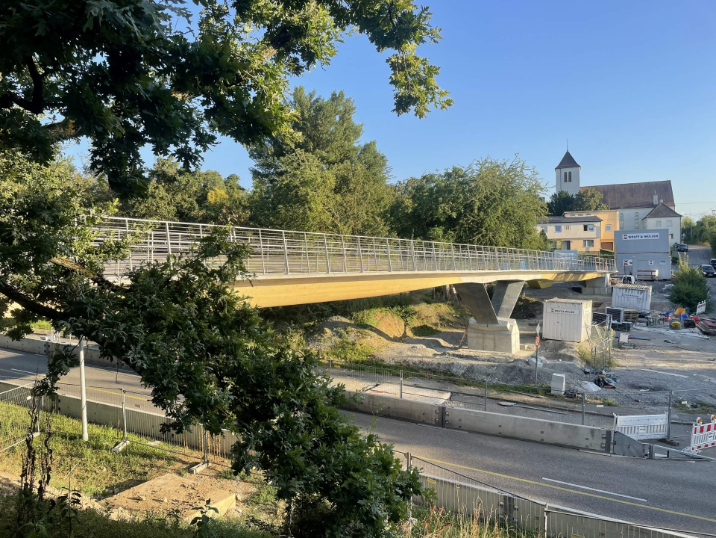Etiketler
The pedestrian and bicycle bridge over Seeblickweg in Stuttgart-Neugereut/Steinhaldenfeld is an approximately 73 m long and 4 m wide integral timber–concrete composite bridge with a carbon-reinforced deck slab. It connects the districts of Neugereut and Steinhaldenfeld and spans Seeblickweg and additional traffic areas below with two main spans and a centrally positioned V-shaped pier.
Client, Planning, and Project Timeline
The client and project management are the Civil Engineering Office of the City of Stuttgart. Harrer Ingenieure – Consulting Engineers VBI mbH – was commissioned with the design of the bridge structure. The engineering work comprised preliminary and detailed design, tendering, construction supervision, on-site inspection and support in obtaining the required project-specific approvals (ZiE). The planning and project duration extended over several years; construction of the new bridge began on site in 2023.
Structure and Construction Method
The bridge is designed as an integral pedestrian and bicycle bridge spanning three fields. In the mid-span areas, a timber–concrete composite section is used: prefabricated timber beams carry an in-situ concrete slab that is rigidly connected to the timber. At the bridge ends and in the area of the central support, the superstructure is formed as a slender slab beam with cantilevers and cornices made of carbon-reinforced concrete. The non-metallic reinforcement allows for a reduced structural thickness and significantly lowers the self-weight of the superstructure.
The V-shaped central support divides the total length into individual spans of approximately 31 m – 8 m – 31 m, enabling a long-span, support-efficient solution that minimally impacts the traffic space beneath the bridge.
Carbon-Reinforced Deck Slab and Reinforcement Concept
A special feature of the project is the deck slab made of carbon-reinforced concrete. The reinforcement consists of non-metallic carbon mesh and bar-shaped elements. For transferring shear forces in the timber–concrete composite structure, bar-shaped carbon shear stirrups were used for the first time. The solidian REBAR reinforcement was bent into U-shaped shear stirrups and arranged as shear reinforcement; in total, around 80 m of rolled reinforcement bars were installed. Additionally, mesh reinforcement from HITEXBAU GmbH was used.
Verification of the shear reinforcement was carried out on the basis of the new DAfStb guideline for non-metallic reinforcement in cast-in-place concrete construction. Due to the materials not yet being fully covered by building regulations, both a project-specific construction approval and individual case approvals were required; these were developed and handled within the framework of the project.
Projectpartners
(extract of projectpartners)
- Client / Project Management: City of Stuttgart, Technical Department, Civil Engineering Office
- Structural Design / Overall Bridge Design: Harrer Ingenieure, Consulting Engineers VBI mbH
- Construction: Wolff & Müller Ingenieurbau GmbH, Stuttgart
- Reinforcement Manufacturer / Research Partners: including solidian GmbH, HITEXBAU GmbH, Schöck Bauteile GmbH, Augsburg University of Applied Sciences, TU Dortmund University
Photos: © Harrer Ingenieure Gesellschaft Beratender Ingenieure VBI mbH












